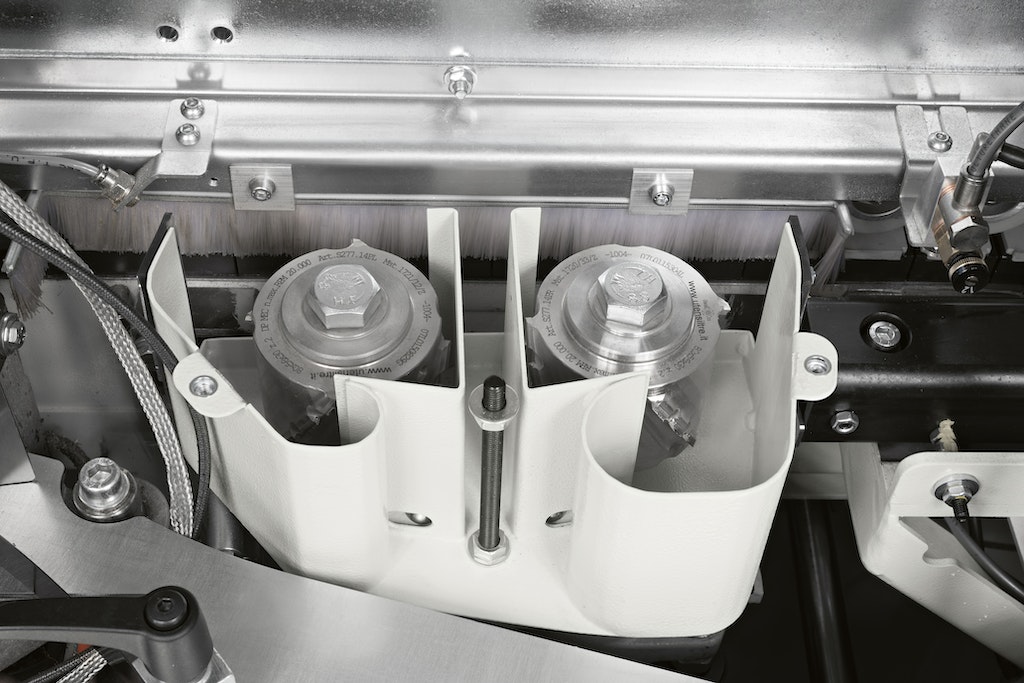The Benefits of Pre-Mill on an Edgebander
Introduction
An edgebander is an essential piece of equipment in woodworking, used to apply edgebanding to the edges of various materials such as plywood, particleboard, and MDF. One of the key features of a modern edgebander is the pre-mill, a function that offers several advantages to the user. In this article, we will explore the benefits of pre-mill on an edgebander and how it can improve the overall quality and efficiency of your woodworking projects.
- Improved Edgebanding Quality The pre-mill function on an edgebander is designed to remove a small amount of material from the edge of the workpiece before the edgebanding is applied. This process ensures that the edge is smooth, clean, and free of any imperfections that could affect the quality of the finished product. By removing any irregularities, the pre-mill function allows for a more precise and secure bond between the edgebanding and the workpiece, resulting in a more professional and polished appearance.
- Enhanced Gluing Process The pre-mill function on an edgebander also plays a crucial role in the gluing process. By removing a small amount of material from the edge of the workpiece, the pre-mill creates a larger surface area for the glue to adhere to. This results in a stronger bond between the edgebanding and the workpiece, reducing the likelihood of delamination or other issues that can arise from a weak bond.
- Increased Efficiency Incorporating a pre-mill function on an edgebander can significantly increase the efficiency of your woodworking projects. By removing the need for manual edge preparation, the pre-mill function streamlines the edgebanding process, allowing you to complete your projects more quickly and with less effort. This increased efficiency translates to reduced labor costs and faster turnaround times, making your woodworking operation more competitive and profitable.
- Versatility The pre-mill function on an edgebander is not limited to a specific type of material. It can be used on a wide range of materials, including plywood, particleboard, MDF, and solid wood. This versatility allows you to work with various materials without the need for additional equipment or manual preparation, making the pre-mill function an essential tool for any woodworking operation.
Conclusion
The pre-mill function on an edgebander offers numerous benefits, including improved edgebanding quality, enhanced gluing process, increased efficiency, and versatility. By incorporating a pre-mill function into your edgebander, you can elevate the quality of your woodworking projects while reducing labor costs and improving your operation's overall efficiency. If you are considering investing in an edgebander, make sure to choose a model with a pre-mill function to ensure the best possible results.
Related Articles
Things to look for when choosing an edgebander
If you are in the market for a new edgebander here are a few of the questions to ask yourself and what to look for when shopping. What thickness of edges am I looking to apply? Basic edgebanders are intended for applying thin tape (around .5mm) As ...New Edgebander Plan
Paying a little attention to proper setup and regular maintenance will go along way to keeping your edgebander productive. Edgebanders are the central machine in today’s panel-driven cabinet shop, but they are a complex machine and have a reputation ...Understanding Upcut, Downcut and Compression Router Bits
Understanding Upcut, Downcut and Compression Router Bits Router bits are the cutting tools used by handheld routers and CNC machines to mill grooves, slots and profiles in wood, plastic and composite materials. Spiral router bits are particularly ...